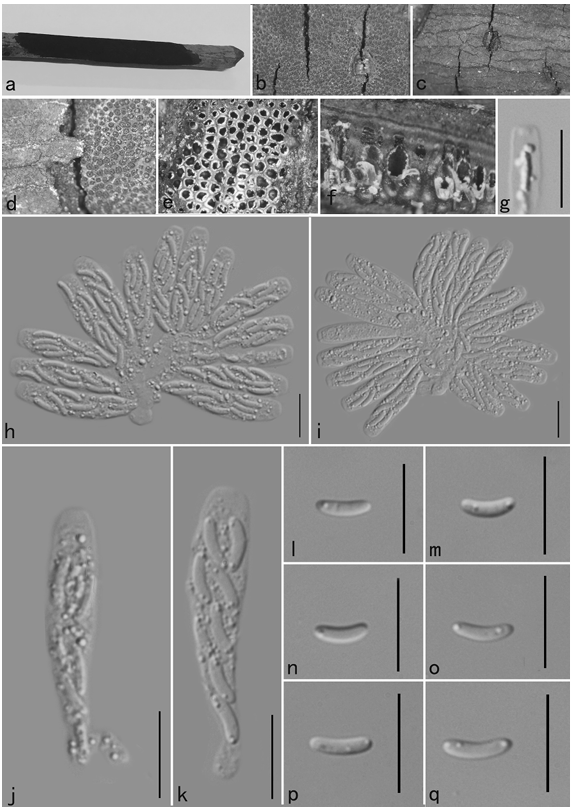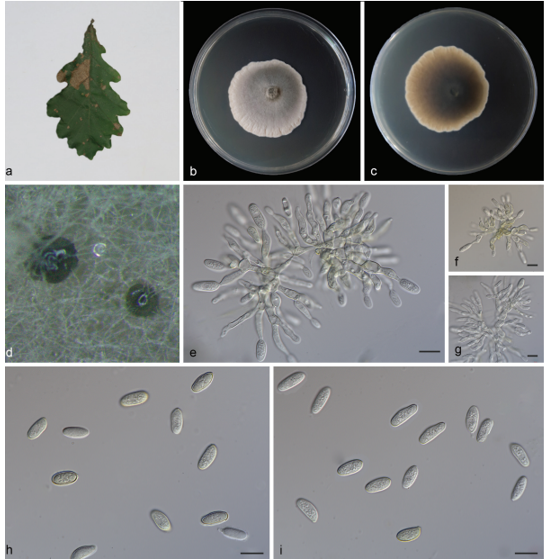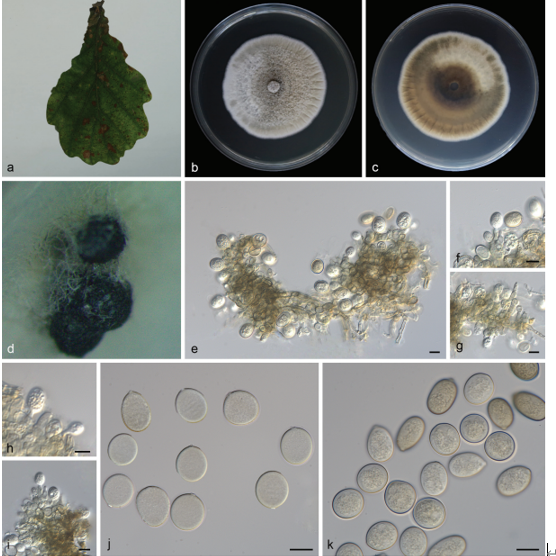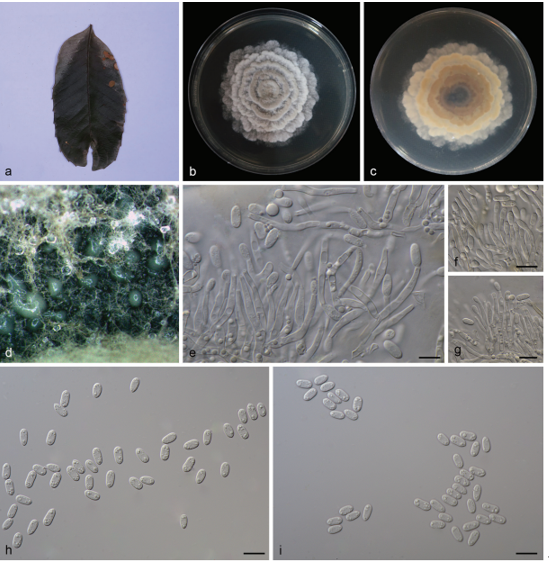Corynespora submersa Z.L. Luo, H.Y. Su & K.D. Hyde, sp. nov. 2020
Index Fungorum number: IF557058; Facesoffungi number: FoF07072
Holotype: China, Yunnan Province, saprobic on decaying wood submerged in Dulong River, May 2015, Z.L. Luo, S-504 (HKAS 92703, holotype), ex-type living culture MFLUCC 16–1101.
Morphological description
Saprobic on decaying wood submerged in freshwater habitats. Sexual morph Undetermined. Asexual morph Colonies on natural substrate effuse, dark brown to black. Mycelium partly superficial, partly immersed in the substrate, composed of branched, septate, subhyaline to brown, smooth-walled hyphae. Conidiophores 150–370 μm (x̄ = 260 μm, SD = 110, n = 10) long, 10–12 μm (x̄ = 11 μm, SD = 1, n = 10) wide, macronematous, mononematous, erect or ascending, simple, straight or flexuous, pale brown to dark brown, septate, with up to four successive cylindrical proliferations. Conidiogenous cells monotretic, cylindrical, pale brown to brown, often with proliferation through the apical pore and formation of another conidium at the apex of the proliferation. Conidia 100–150 μm (x̄ = 125 μm, SD = 25, n=20) long, 16–24 μm (x̄ = 20 μm, SD = 4, n = 20) wide, formed singly or in a short chains through a wide pore at the apex of the conidiophore, almost obclavate, sometimes rostrate, straight or slightly curved, smooth, subhyaline to golden brown, 9–13-distoseptate. Culture characteristics – Colonies on PDA attaining 20 mm diameter within 25 days at 25℃ under natural light, velvety, centrally raised, pale brown or greyish olivaceous, reverse dull green or grey olivaceous.
Habitat: on decaying wood submerged in Dulong River
Distribution: China
GenBank Accession: ITS MN860548 ;LSU MN860553
Notes: Corynespora submersa resembles C. titarpaniensis in having macronematous, erect, straight or flexuous, smooth conidiophores, straight or slightly curved, smooth, distoseptate conidia. However, Corynespora submersa differs from C. titarpaniensis in having subhyaline to golden brown, smaller conidia which are formed singly or in a short chain through a wide pore at the apex of the conidiophore (Kushwaha et al. 2017). Phylogenetic analysis also shows that Corynespora submersa is distinct from other species presently known from culture or DNA sequence.
Reference: Hyde KD, de Silva NI, Jeewon R et al. 2020 – AJOM new records and collections of fungi: 1–100. Asian Journal of Mycology 3(1), 22–294, Doi 10.5943/ajom/3/1/3 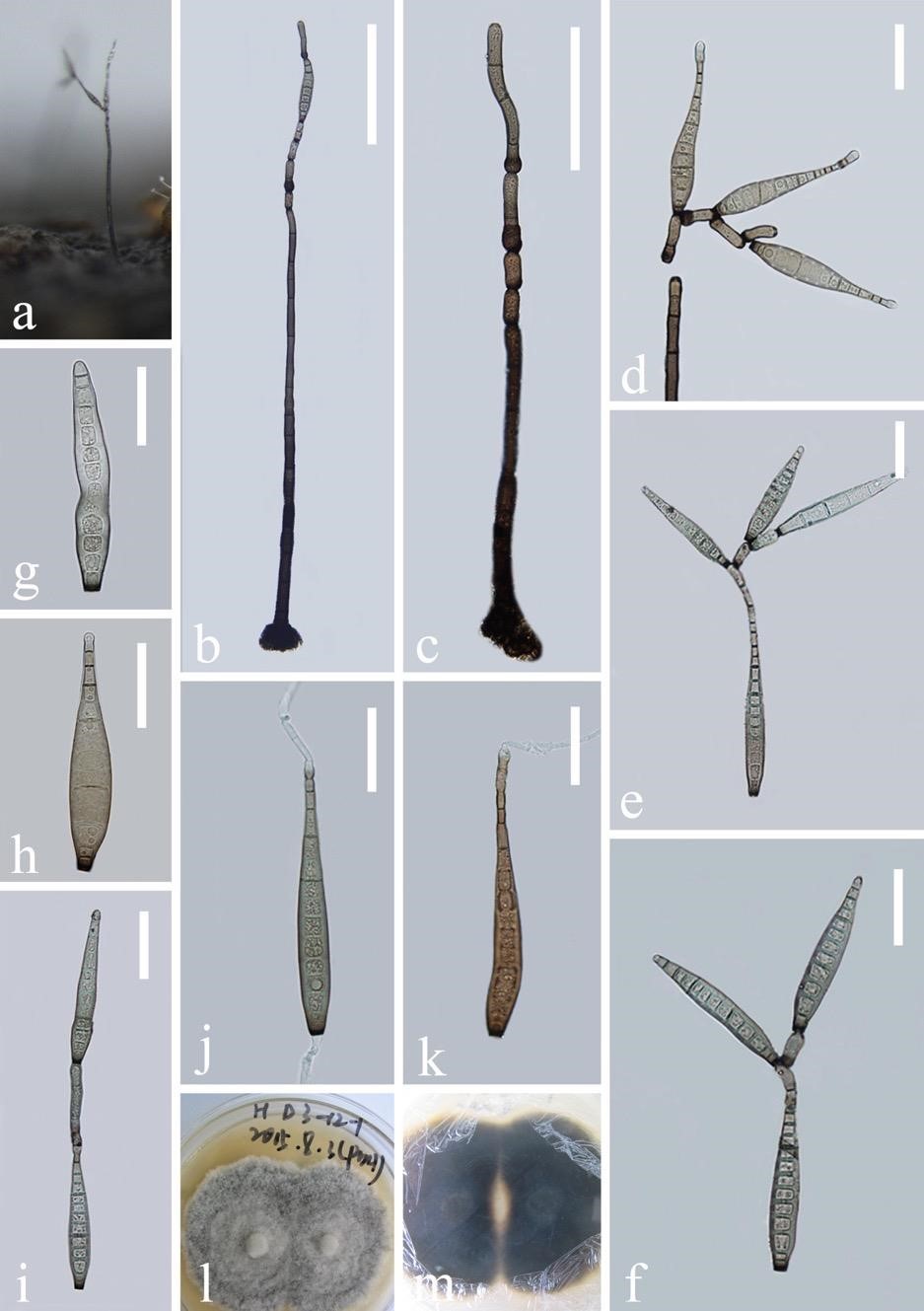
Corynespora submersa (HKAS 92703, holotype). a Conidiophore with conidia on natural substrate. b Conidiophore with conidia. c Conidiophore with conidiogenous cells. d Conidiogenous cells with conidia. e–i Conidia. j, k Germinating conidia. l, m Colony on MEA. Scale bars: b, c = 100 μm, d–k = 50 μm.


